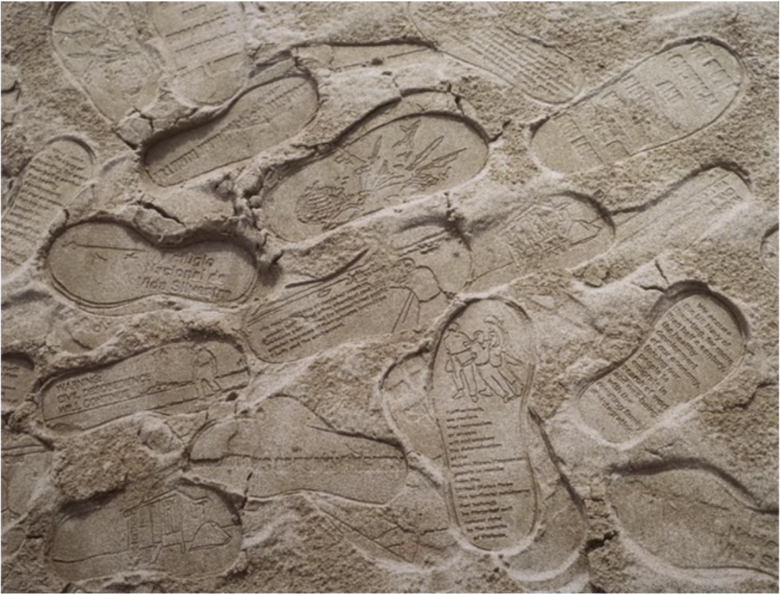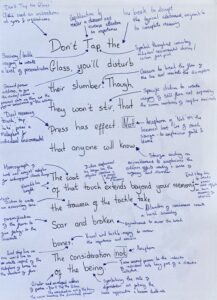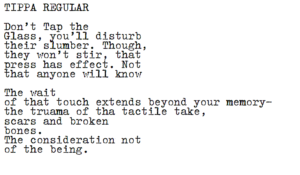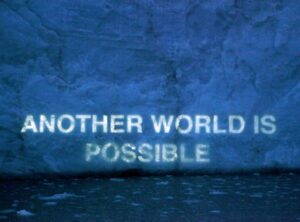Some artists further public art to incorporate an influential ability that shifts and changes perceptions by provoking questions and generating conversations to alter political beliefs (Palmer, J. 2018, p.76). This can be seen within Landmark: Footprints (2001) (Image 7) by Jennifer Allora and Guillermo Calzadilla. Their work explores political issues by presenting them externally from a gallery setting to augment its impact. They collaborated with civil-disobedience groups in Vieques to protest against the US Naval Base. Protesters broke into the US base to disrupt a military training exercise and participate within Allora and Calzadilla’s work.
The protesters wore rubber shoes that had the artists’ designs on the soles leaving readable footprints in the sand. The prints comprised direct slogans stating anger towards the military base and images imagining alternative futures for the island. The impressions were peaceful protest stating, ‘We accuse the US Navy of thwarting, for more than half a century, the healthy development of our economy’ (Landmark: Footprints 2001). The interactive artist collaboration with the public protest raises the political issues faced by the local community. The etched footprints allowed the protesters to communicate their objection to the Naval base whilst reclaiming their land through their footprints (Brown, A. 2014, p.151). This form of public art challenges people to think differently about the location, encouraging interaction with both site and art work, to critically engage and analyse the political situation (Palmer, J. 2018, pp.73-74). Whilst the works by Irland, Allora and Calzadilla engage communities with their public art on a local scale; other artists work to present their work within the public sphere to gain international political attention and public involvement.





